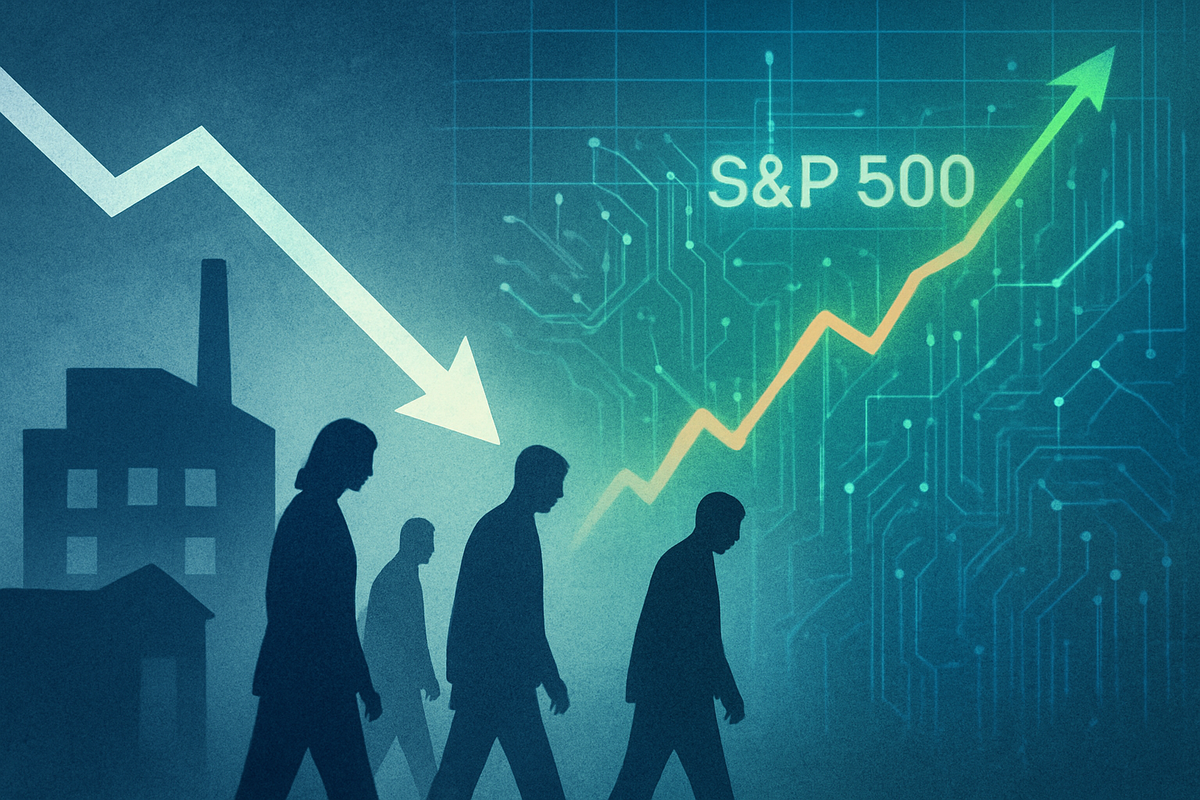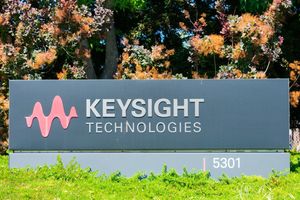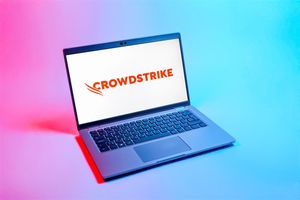
The U.S. economy is currently navigating a perplexing landscape, where a dramatic surge in mass layoffs, marking the highest October job cuts in 22 years, appears to be fueling, rather than hindering, the S&P 500's impressive rally. This "layoffs jump" has seen over 1.1 million jobs cut year-to-date, a figure reminiscent of the Great Recession, yet Wall Street has largely responded with a counterintuitive optimism, leading some economists to coin the term "jobless boom." As of November 2025, the market is grappling with the dual realities of significant workforce reductions and a robust, albeit concentrated, stock market performance.
This phenomenon presents a complex challenge for policymakers and investors alike, as traditional economic indicators of labor market health diverge sharply from stock market sentiment. The Federal Reserve has already begun cutting interest rates, citing "downside risks" to employment, while companies across various sectors announce massive job reductions, often attributing them to cost-cutting and the rapid integration of artificial intelligence. The immediate implication is a market that prioritizes corporate efficiency and profitability above all, even at the cost of widespread job displacement, raising critical questions about the sustainability and inclusivity of current economic growth.
The Unfolding Narrative: A Deep Dive into the "Layoffs Jump"
The scale of recent job losses is striking. U.S. employers announced 153,074 planned layoffs in October 2025, an astonishing 183% increase from the previous month and 175% higher than October 2024. This brings the year-to-date total to over 1.1 million job cuts, a level not seen since the 2008-2009 financial crisis and the highest since the pandemic's initial shock in 2020. This "layoffs jump" is not confined to a single industry but is a broad-based phenomenon impacting major sectors of the economy.
The technology sector has been at the forefront of these reductions, with companies like Amazon (NASDAQ: AMZN) announcing plans to cut 14,000 corporate jobs, potentially reaching 30,000 total reductions. Intel (NASDAQ: INTC) is reportedly cutting around 24,000 positions, while Meta Platforms (NASDAQ: META) is trimming approximately 8,000 roles, including some in its burgeoning AI unit. Microsoft (NASDAQ: MSFT), Salesforce (NYSE: CRM), and IBM (NYSE: IBM) have also contributed to the ongoing workforce rebalancing in tech. Beyond technology, warehousing and logistics have seen significant cuts, exemplified by UPS (NYSE: UPS) announcing the largest reduction in its 117-year history with 48,000 workers. Ford (NYSE: F) is implementing substantial cuts ranging from 8,000 to 13,000 jobs, and Target (NYSE: TGT) plans to eliminate 1,800 corporate positions. Even the media industry is affected, with Paramount Global (NASDAQ: PARA) preparing to cut 2,000-3,000 jobs following its merger. The government sector has also shed over 300,000 jobs this year, exacerbated by a recent government shutdown and initiatives like the Department of Government Efficiency (DOGE).
Companies are predominantly citing cost-cutting measures and the accelerating adoption of artificial intelligence as the primary drivers behind these layoffs. In October alone, cost-cutting accounted for over 50,000 announced layoffs, while AI was directly responsible for more than 31,000 planned job cuts. Executives often frame these reductions as "strategic realignments" aimed at enhancing efficiency and prioritizing productivity in an increasingly AI-driven economic landscape, rather than merely short-term austerity. This narrative suggests a fundamental shift in corporate strategy, where technological advancements are directly impacting labor market dynamics.
The U.S. unemployment rate has consequently climbed, reaching 4.3% in August 2025, up from 4.2% in July, marking its highest level since October 2021. Projections from the National Association for Business Economics anticipate this rate to further increase to 4.5% in 2026. Concurrently, hiring plans have decelerated significantly, hitting their weakest levels since 2009, with seasonal hiring for 2025 being the lowest since 2012. Private sector employment saw only a modest increase of 42,000 jobs in October, painting a picture of a tightening and increasingly cautious labor market.
Winners and Losers: Corporate Fortunes Amidst Job Cuts
The current environment of mass layoffs creates a distinct divide between potential corporate winners and losers, often in unexpected ways. Companies that are aggressively streamlining operations, particularly through AI adoption, and demonstrating improved efficiency are frequently rewarded by the market. Tech giants like Amazon (NASDAQ: AMZN), Microsoft (NASDAQ: MSFT), and Meta Platforms (NASDAQ: META), despite or perhaps because of their significant layoff announcements, have seen their stock prices surge. Amazon's stock, for instance, jumped 11.6% after its layoff news, contributing positively to the S&P 500. Investors are interpreting these cuts as a sign of corporate agility, a commitment to profitability, and a strategic pivot towards a more productive, AI-driven future, even when the companies are performing well. This sentiment favors firms that can show strong earnings per share growth through cost management.
Conversely, companies that are perceived as bloated, inefficient, or slow to adapt to technological shifts may face investor skepticism. While specific "loser" companies are harder to pinpoint solely based on layoff announcements (as some cuts are necessary for long-term health), sectors heavily reliant on traditional labor models and those struggling with profitability amidst rising costs could be vulnerable. The retail sector, for example, with Target (NYSE: TGT) announcing corporate cuts, faces ongoing pressures from e-commerce and changing consumer habits, making efficiency paramount. Similarly, traditional manufacturing and logistics companies, like Ford (NYSE: F) and UPS (NYSE: UPS), are undergoing significant transformations, and their ability to successfully implement these strategic realignments will determine their long-term market perception.
The "jobless boom" phenomenon also suggests that companies with high market capitalization and strong balance sheets are better positioned to weather economic shifts and implement transformative technologies. These mega-cap firms, particularly in technology, are driving the S&P 500's gains, creating a highly concentrated market. This concentration means that while the overall index performs well, many smaller or mid-cap companies might not be experiencing the same tailwinds, potentially leading to a widening gap in corporate performance. Defensive sectors such as consumer staples, healthcare, and utilities tend to show resilience during periods of high layoffs as consumer spending shifts towards necessities, potentially benefiting companies like Johnson & Johnson (NYSE: JNJ) or Procter & Gamble (NYSE: PG) in the long run.
Ultimately, the companies that will "win" in this climate are those that can effectively communicate a clear strategy for growth and profitability, even if it involves difficult workforce decisions. Those that can leverage AI to enhance productivity, reduce operational costs, and innovate their product offerings are likely to be favored by investors. The "losers" may be those that fail to adapt quickly enough, are burdened by legacy costs, or cannot demonstrate a credible path to increased efficiency in a rapidly evolving economic landscape.
Wider Significance: A New Economic Paradigm
The current wave of mass layoffs and its paradoxical impact on the S&P 500 signifies a potentially new economic paradigm, where technological disruption, particularly from artificial intelligence, is reshaping the labor market and investor expectations. This event is not merely a cyclical downturn but appears to be intertwined with broader industry trends focused on automation, efficiency, and a re-evaluation of human capital's role in corporate value creation. The emphasis on "strategic realignments" and AI adoption as drivers for job cuts suggests a structural shift rather than just a response to economic contraction.
The ripple effects are profound. Competitors and partners across industries are closely watching how leading companies manage these transitions. Firms that successfully integrate AI and streamline operations may gain a significant competitive advantage, pressuring others to follow suit or risk falling behind. This could lead to an acceleration of automation across various sectors, creating a feedback loop of job displacement. For instance, the significant cuts at UPS (NYSE: UPS) could prompt rivals like FedEx (NYSE: FDX) to explore similar efficiency-driven workforce adjustments. Furthermore, the concentration of market gains in a few mega-cap tech companies indicates a potential widening of the wealth gap between tech-forward firms and more traditional businesses, creating an uneven economic recovery.
Regulatory and policy implications are also coming to the forefront. The Federal Reserve's decision to cut interest rates, partly due to "downside risks" to employment, highlights the government's concern over the labor market's health. There may be increasing pressure for policymakers to address the societal impact of AI-driven job displacement, potentially leading to discussions around retraining programs, universal basic income, or new forms of social safety nets. The ongoing government shutdown, which has delayed the release of official labor market data, further complicates the ability of policymakers to accurately assess and respond to these evolving trends.
Historically, periods of significant technological advancement have often been accompanied by labor market disruptions. The Industrial Revolution, for example, saw widespread displacement of agricultural workers. However, the speed and scale of AI adoption, coupled with the "jobless boom" phenomenon, present a unique challenge. While past disruptions eventually led to the creation of new types of jobs, the current narrative suggests a more direct substitution of human labor by AI in certain functions. The S&P 500's performance, driven by a concentrated group of tech companies, also echoes historical precedents of market concentration preceding periods of increased volatility or lower returns, such as the Dot-Com era. This suggests that while the current market rally is robust, its foundation might be narrower than perceived.
What Comes Next: Navigating a Transformed Landscape
Looking ahead, the short-term outlook suggests continued volatility and a deepening divergence between labor market health and stock market performance. The "jobless boom" could persist as companies prioritize efficiency and AI integration, potentially leading to further rounds of strategic layoffs. Investors will likely continue to reward companies that demonstrate strong profitability and lean operations, even if it means further job cuts. However, this trend is not without its risks. A sustained period of high unemployment and stagnant wage growth could eventually dampen consumer spending, which forms a significant portion of the U.S. economy, potentially leading to a broader economic slowdown that even a resilient stock market cannot ignore.
In the long term, the implications are more profound. The widespread adoption of AI is poised to fundamentally transform the nature of work. This necessitates strategic pivots and adaptations from both corporations and the workforce. Companies will need to continually reassess their operational structures, invest in AI infrastructure, and potentially re-skill their remaining employees for higher-value tasks that complement AI capabilities. For the workforce, continuous learning and adaptability will be paramount. Education systems may need to undergo significant overhauls to prepare future generations for an AI-driven economy, focusing on critical thinking, creativity, and skills that are less susceptible to automation.
Market opportunities may emerge in sectors that develop and implement AI solutions, as well as those that cater to the new needs of a transformed workforce or address the social implications of widespread automation. Companies specializing in AI development, robotics, and advanced analytics, such as Nvidia (NASDAQ: NVDA) or Alphabet (NASDAQ: GOOGL), are likely to continue to thrive. Additionally, there could be opportunities in industries focused on human-centric services, creative fields, and areas requiring complex problem-solving that AI cannot yet fully replicate. Conversely, challenges will arise for industries and job roles that are highly susceptible to automation, necessitating significant strategic shifts or even complete overhauls to remain viable.
Potential scenarios range from a "soft landing" where new jobs are created to offset those lost to AI, leading to a new era of productivity and prosperity, to a more challenging scenario of persistent high unemployment and increased societal inequality if job creation fails to keep pace with displacement. The ongoing debate among economists about whether the U.S. economy is in a "macro consolidation period" or heading towards a full-blown recession underscores the uncertainty. The government's response to these challenges, including potential policies to support displaced workers and foster new industries, will be critical in shaping the ultimate outcome.
Comprehensive Wrap-up: Navigating the New Normal
The current financial landscape, characterized by a significant "layoffs jump" alongside a robust S&P 500, represents a pivotal moment for the U.S. economy. Key takeaways include the unprecedented scale of recent job cuts, driven largely by cost-cutting and aggressive AI adoption, and the market's counterintuitive positive reaction, often termed a "jobless boom." This phenomenon highlights a clear shift in investor priorities towards corporate efficiency and profitability, even at the expense of workforce expansion. The market's gains are increasingly concentrated in a handful of mega-cap technology companies, signaling a potentially narrow foundation for overall index performance.
Moving forward, the market is likely to remain volatile, influenced by the ongoing interplay between technological advancement, labor market dynamics, and monetary policy. The Federal Reserve's rate cuts reflect a cautious approach, acknowledging the "downside risks" to employment. Investors should assess companies not just on their current performance but also on their strategic adaptability to an AI-driven future. Those that can effectively leverage AI to enhance productivity and maintain strong profit margins are likely to outperform.
The lasting impact of this period could be a permanently altered labor market, where the nature of work and the skills required for success are fundamentally redefined. The societal implications of widespread automation and job displacement will require careful consideration from policymakers and business leaders alike. What investors should watch for in the coming months includes further announcements of corporate layoffs and hiring trends, the actual impact of AI on corporate earnings, and any shifts in consumer spending patterns. Additionally, monitoring the Federal Reserve's stance on interest rates and any new government initiatives aimed at addressing labor market transformation will be crucial in understanding the trajectory of this evolving economic narrative.
This content is intended for informational purposes only and is not financial advice







